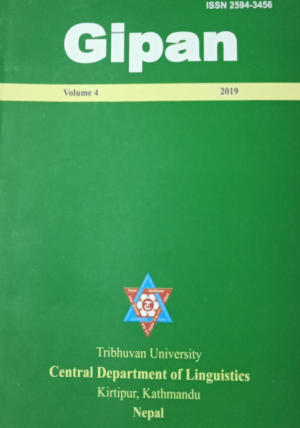Cognitive archaeology: in search of the earliest syntactic language-users in Himalaya
DOI:
https://doi.org/10.3126/gipan.v4i0.35452Keywords:
cognitive archaeology, neural structure, syntactic language, verbal communication, Arjun complexAbstract
Recent scientific studies unfold that neural structures bearing on intonation of speech have a deep evolutionary history traced to mammal-like reptiles called therapsids found in the Triassic period (∼252.17 mya, million years ago). Therefore, these structures were already present in the primates. It goes to the credit of Homo sapiens who developed it to the extent that humans are defined as symbolling animals, for language is the most articulated symbolism. Cognitive archaeology makes it clear that it took hominins millions of years to develop a syntactic language. Stratigraphically controlled and securely established artefact-bearing sites of the Middle Palaeolithic Arjun complex in the Deokhuri Valley, West Nepal, provide firm dates for the presence of the earliest syntactic language speakers in Himalaya from 100 ka to 70 ka (thousand years ago).
Downloads
Downloads
Published
How to Cite
Issue
Section
License
This license enables reusers to distribute, remix, adapt, and build upon the material in any medium or format for noncommercial purposes only, and only so long as attribution is given to the creator.

